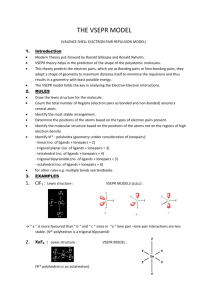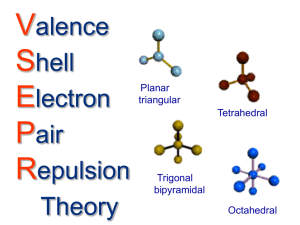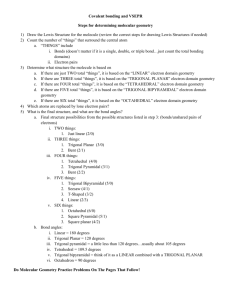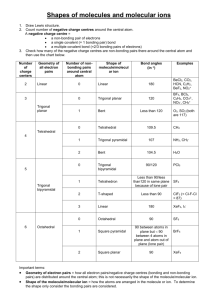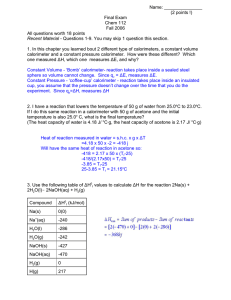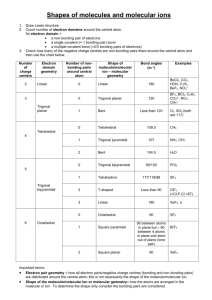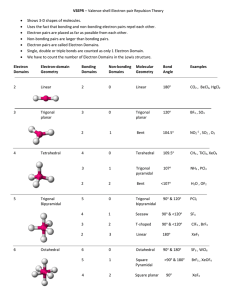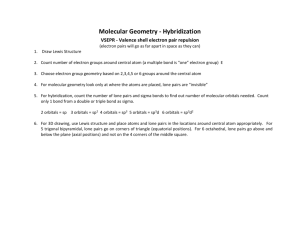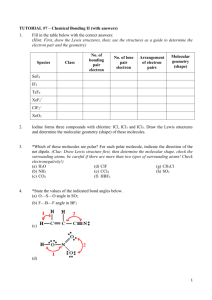VSEPR Theory
advertisement
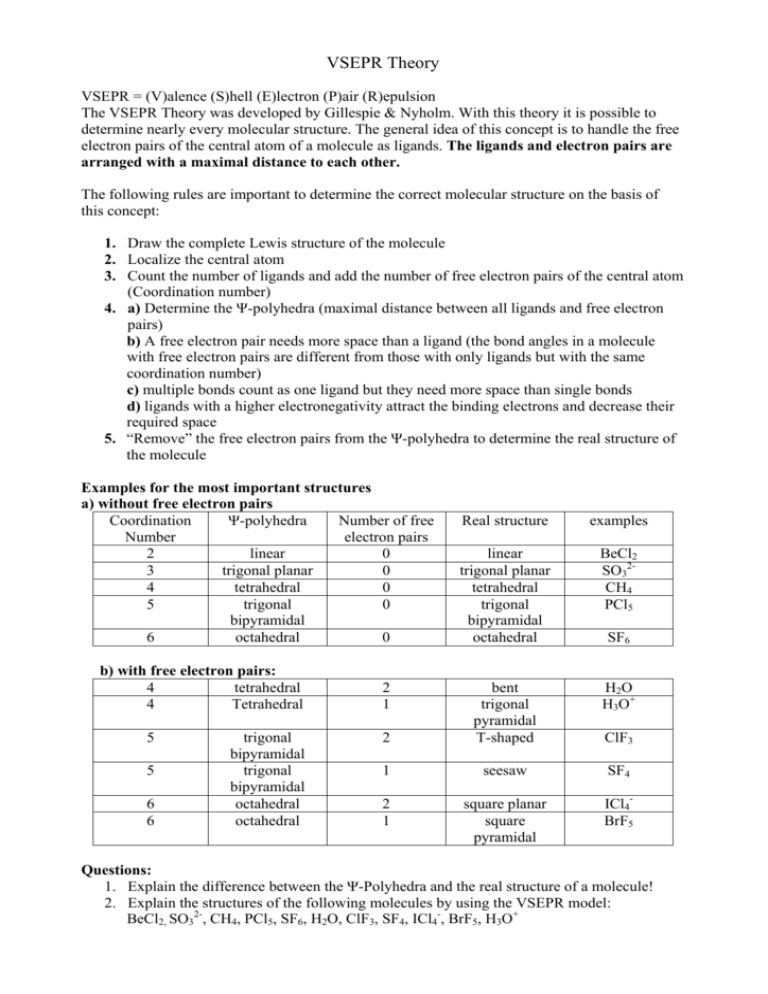
VSEPR Theory VSEPR = (V)alence (S)hell (E)lectron (P)air (R)epulsion The VSEPR Theory was developed by Gillespie & Nyholm. With this theory it is possible to determine nearly every molecular structure. The general idea of this concept is to handle the free electron pairs of the central atom of a molecule as ligands. The ligands and electron pairs are arranged with a maximal distance to each other. The following rules are important to determine the correct molecular structure on the basis of this concept: 1. Draw the complete Lewis structure of the molecule 2. Localize the central atom 3. Count the number of ligands and add the number of free electron pairs of the central atom (Coordination number) 4. a) Determine the Ψ-polyhedra (maximal distance between all ligands and free electron pairs) b) A free electron pair needs more space than a ligand (the bond angles in a molecule with free electron pairs are different from those with only ligands but with the same coordination number) c) multiple bonds count as one ligand but they need more space than single bonds d) ligands with a higher electronegativity attract the binding electrons and decrease their required space 5. “Remove” the free electron pairs from the Ψ-polyhedra to determine the real structure of the molecule Examples for the most important structures a) without free electron pairs Coordination Ψ-polyhedra Number of free Number electron pairs 2 linear 0 3 trigonal planar 0 4 tetrahedral 0 5 trigonal 0 bipyramidal 6 octahedral 0 b) with free electron pairs: 4 tetrahedral 4 Tetrahedral 5 5 6 6 trigonal bipyramidal trigonal bipyramidal octahedral octahedral Real structure examples linear trigonal planar tetrahedral trigonal bipyramidal octahedral BeCl2 SO32CH4 PCl5 H2O H3O+ 2 bent trigonal pyramidal T-shaped 1 seesaw SF4 2 1 square planar square pyramidal ICl4BrF5 2 1 SF6 ClF3 Questions: 1. Explain the difference between the Ψ-Polyhedra and the real structure of a molecule! 2. Explain the structures of the following molecules by using the VSEPR model: BeCl2, SO32-, CH4, PCl5, SF6, H2O, ClF3, SF4, ICl4-, BrF5, H3O+
